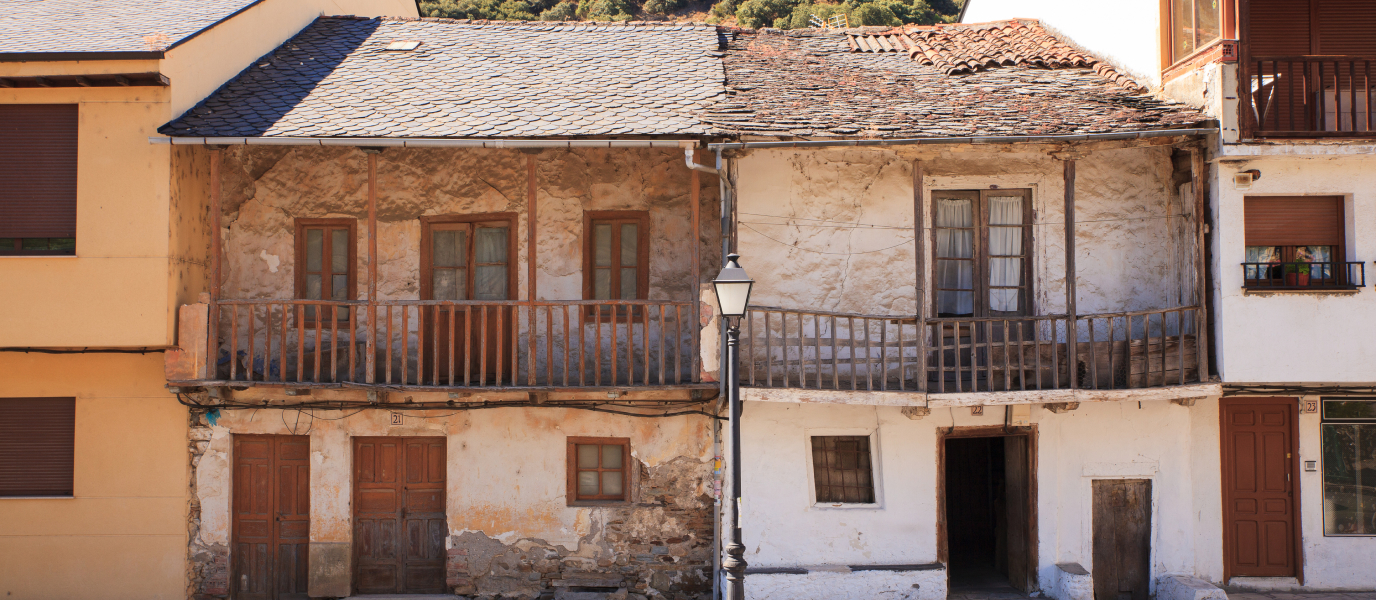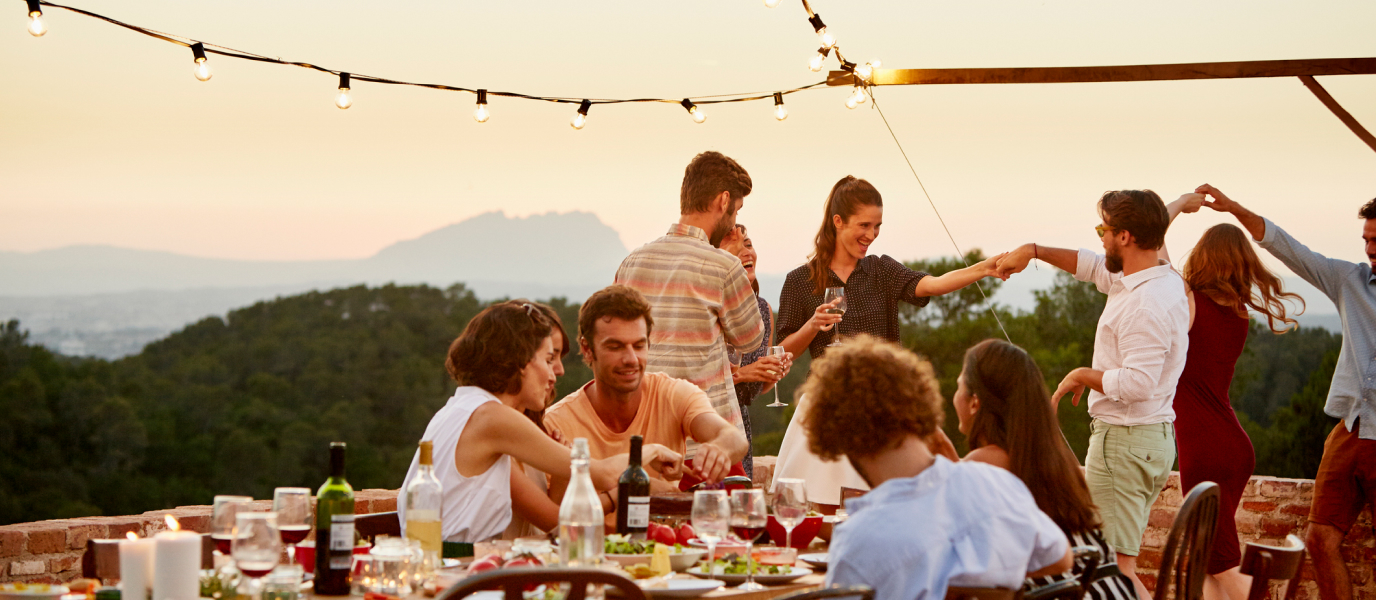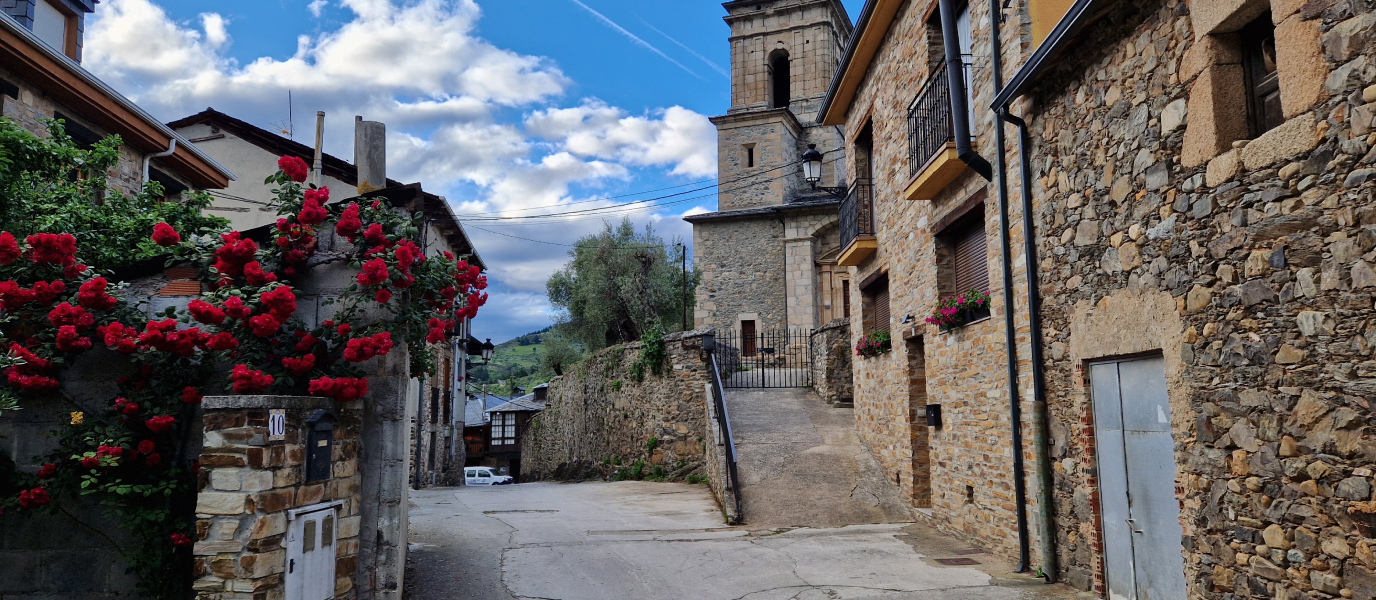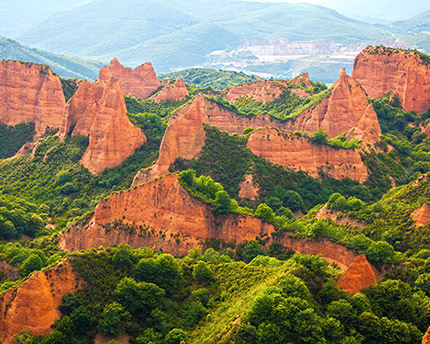Legend has it that some shepherds with their flocks, who were enduring a cold and windy storm, suddenly saw a white cow and decided to follow it. There, on the site at which they stopped, they founded a village that gave rise to Villafranca del Bierzo.
The historical truth is that Villafranca del Bierzo was a military fort in Roman times used to protect the gold route and even the place where Asturians and Caliphate troops fought during the Reconquest. Above all, it was its geographical location, at the start of the harsh valley of the Valcarce river, that made it a rest stop for pilgrims who wanted to see the apostle Saint James the Great in Galicia. In fact, many historians put its development down to the hospitals that were created to attend to walkers.
Thus arose its castle, its medieval structure and its famous Santiago church with its own Puerta del Perdón, which granted the papal bull.
History of Villafranca del Bierzo
Since it was founded in Roman times, Villafranca del Bierzo has always been a place of conflict due to its geographical location. The Asturians took it from the Muslims and it then passed from hand to hand in the kingdoms of León and Castile.
In the twelfth century, Villafranca del Bierzo was a lordship owned by Sancha Raimúndez, the king’s sister, before it was eventually passed to Urraca de Zamora. Its very name refers to a free village, exempt from the payment of certain taxes, thanks to the fact that the Camino de Santiago passes through it, resulting in Franks, Jews and Galicians settling there.
Alfonso IX created the title of Count of Benavente for one of his allies at the court, to whom he gave the lordship, which passed in and out of the possession of the house for centuries.
As we have already mentioned, the location of Villafranca has always been key to the area’s control and, during the Peninsular War, it became the headquarters of the Galician Army and its allies. This did not prevent it from being plundered by the English, however, on up to three occasions, and by the French, who even burnt the municipal archives.
Perhaps it is because of this constant presence of the Galicians and its proximity to Lugo that Villafranca del Bierzo is today one of the villages in León where Galician is spoken.
Santiago church
Santiago church is one of the most important mystical sites on the Camino de Santiago before reaching Compostela. Built in the twelfth century, after the Bishop of Astorga obtained permission from the pope to build a church dedicated to St James (Santiago) where pilgrims who could not complete the route, due to illness or accident, could also obtain, 190 kilometres from Santiago de Compostela, the Jubilee pardoning. Having said that, they would still have had to walk at least 100 kilometres of the sacred route.
In addition to the Puerta del Perdón, which only opens on the Camino’s Holy Years and which remained closed in the nineteenth and twentieth centuries due to the plague and looting, the single-nave church has an austere doorway with semicircular arches and a belfry that slightly elevates the height of the Romanesque church.
Inside, the chevet stands out, with its drum apse, which is very typical of Romanesque churches, and a life-size fourteenth-century crucified Christ.
San Francisco church
As previously mentioned, some of the convents that sprang up in Villafranca del Bierzo were plundered by the English and the French during the Peninsular War. In the case of San Francisco church, founded in the thirteenth century by Urraca de Zamora, all that remains is the church, which has incredible views of the town.
Romanesque in style with some Gothic and Baroque details, due to the various extensions it has undergone, its façade and strong walls particularly stand out. Inside, it has a Churriqueresque-style altarpiece and a painting of the Eucharistic Christ from the school of Juan de Flandes.
Also noteworthy is its choir, in the Plateresque style but still reflecting a sense of Franciscan austerity, and several tombs of knights and noblewomen who were important to Villafranca.
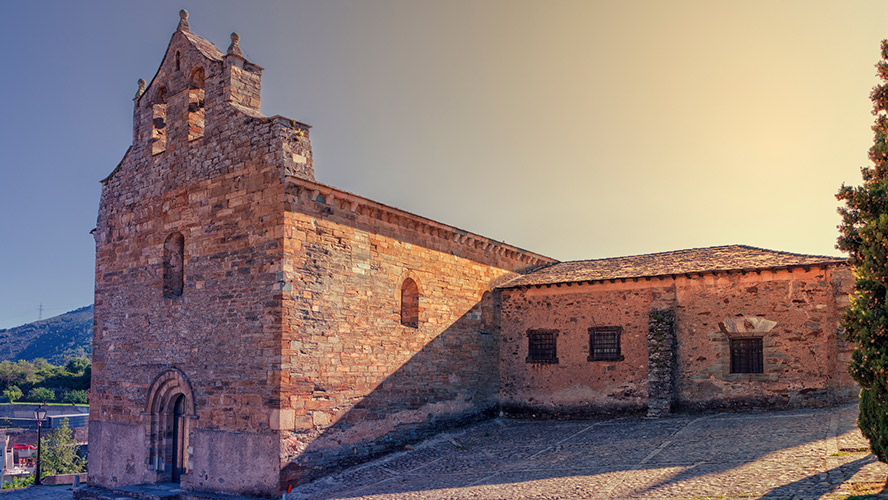
Villafranca castle
If you visit the imposing Castle of the Marquises of Villafranca very early in the morning or on a foggy day, the result is an almost film-like image: strong walls, circular corner towers, barred windows and a spectacular location.
The castle that stands today, which is privately owned and therefore not open to the public, was built on the site of an older castle known as La Fuerza. It was Joana of Castile who granted permission to create a complex adapted for the Marquises of Villafranca to live in.
From then on, extensions were added and it was transformed into an Italianate-style fortification, as seen in its circular towers with slate roofs, typical of the area.
The castle was plundered by the English as they fled to Lugo during the French invasion and later set on fire by Gallic troops who destroyed what they could.
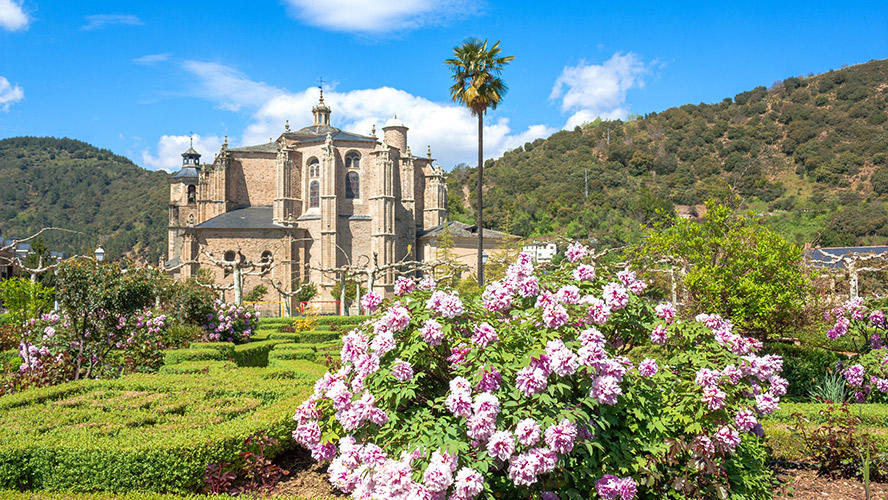
The Collegiate Church of Santa María
The Collegiate Church of Santa María was built on the site of a former monastery of the Order of Cluny, which was established in Villafranca in the twelfth century as a place of lodging for French pilgrims. It was also one of the places that spearheaded wine-making in the area. Nothing of this remains today, however.
The building is an example of sixteenth-century Bierzo architecture, which was very important in the area, although the prolonged length of time it took to be built (200 years), meant that later features were also added. The church, built by the order of the Marquis of Villafranca, Pedro de Toledo, has an interesting interior, above all for its vaults and its dome, which contain altarpieces, as well as the Baroque-Rococo choir.
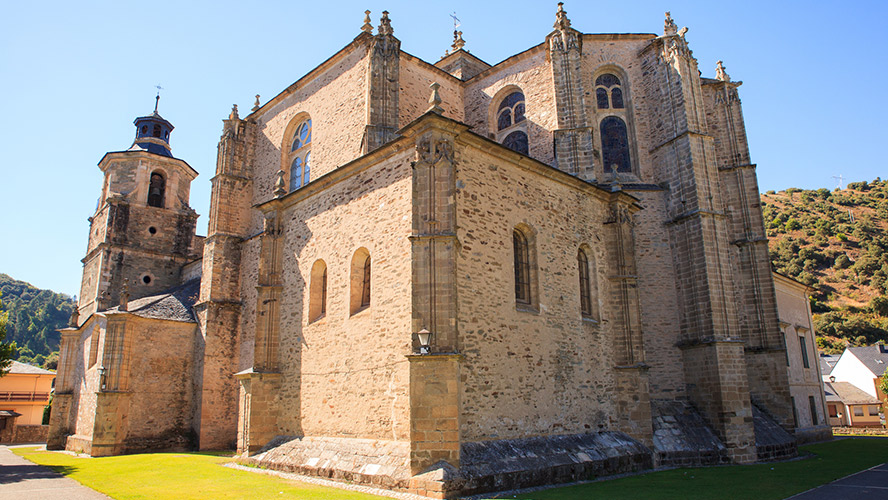
San Nicolás convent
The convent of San Nicolás El Real and its church form one of the most important religious complexes in El Bierzo. Built in the seventeenth century, it is in the traditional design of the Society of Jesus, which constructed it as a school for boys.
Some historians maintain that it is reminiscent of the one in Monforte and even link it with El Escorial in some architectural aspects. The convent of San Nicolás El Real has a personality of its own, however, marked by its impressive façade, which is crowned by the Jesuit coat of arms, and by its interior, where the image of the patron saint of Villafranca, the Christ of Hope, is kept.
In addition to its cloisters and frescoes, its most unusual feature is the Natural Science Museum housed within it.
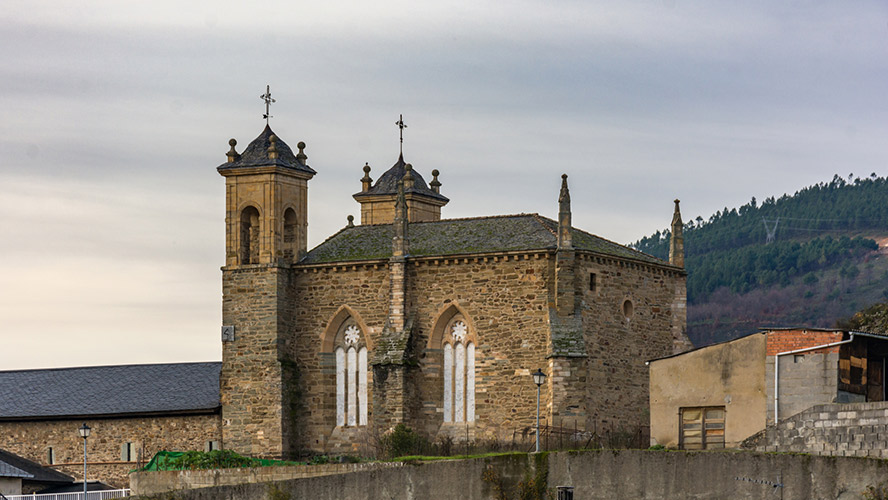
The most beautiful streets in Villafranca: Calle Libertad and Calle del Agua
Walking through the village is like immersing yourself in a world of spirituality thanks to the mark left by the Camino de Santiago.
Calle de la Libertad has a slope where we recommend slowing down to take a good look at the traditional buildings with wooden balconies and coats of arms of families on the stone façades.
Calle del Agua, which forms a stretch of the Camino de Santiago, became Villafranca’s main shopping street in the Middle Ages. Important Baroque buildings such as the Palace of the Marquises of Villafranca and the Palace of Torquemada and also San José convent particularly stand out. At the end of the road, right before the medieval bridge, there is a statue dedicated to pilgrims.
Plaza Mayor
This small but lively square is presided over by Villafranca del Bierzo Town Hall and many of the most traditional bars and restaurants, where you can savour typical dishes from the El Bierzo region. The square still retains the wooden colonnades which are very typical of the area.
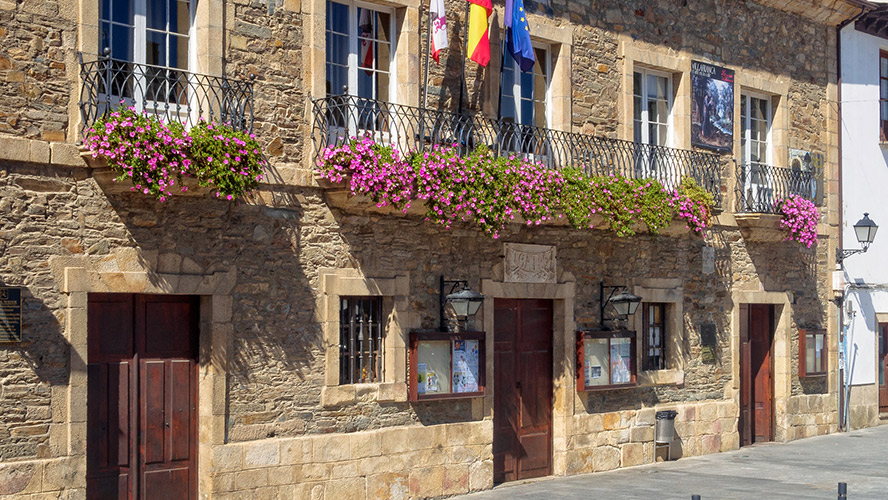
The riverside path
Like other towns in the region, Villafranca has turned the river into a type of river beach. A small dam, a grassy area and a promenade have been created on the riverbed of the Burbia, allowing visitors to swim in the summer months and walk along its waters all year round.
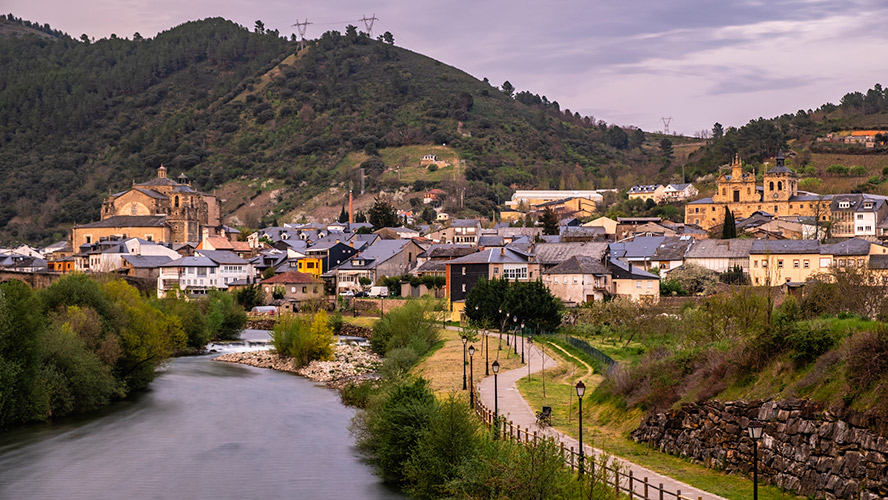
Where to eat in Villafranca del Bierzo
Most of the restaurants are located in the Plaza Mayor area. This is the perfect place to eat a hearty set menu featuring traditional food, at a very good price, where produce is key to each dish, such as at Casino Bar. Some places in the municipality also offer slightly different options, such as Puerta del Perdón, but in this case it is advisable to book ahead.
What to see in the surrounding area
One of the most beautiful places in the area surrounding Villafranca del Bierzo is Los Ancares, which forms the border between the provinces of León and Lugo. Made up of three valleys, the area has preserved the region’s traditional customs and manners in their purest form.
Another nearby town to visit is Ponferrada, which has great historical heritage including the Castle of the Templars and interesting museums such as the Railway Museum. Also recommended are other villages that have also been places of passage on the Camino de Santiago, such as Molinaseca.
If you are looking for a combination of gastronomy, history and a unique natural setting, opt for wine tourism with routes that take in wineries such as those in Adriá or Pérez Caramés.
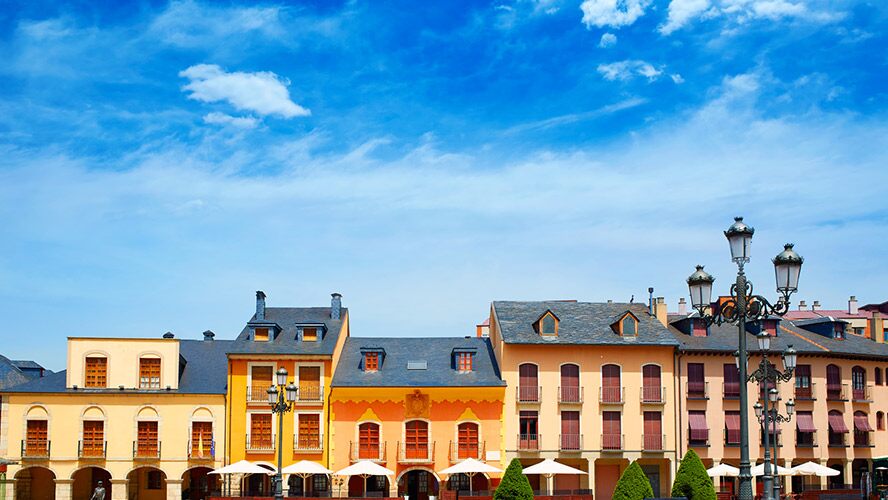
Where to stay in the province of León
There is a range of hostels, guest houses and hotels in Villafranca del Bierzo and the surrounding area, but if you will be continuing your journey on to León, your best bet is choosing a hotel in the old town, such as the Barceló León Conde Luna. This hotel has 136 bright and fully-equipped rooms. It is also renowned in gastronomic terms for its two emblematic restaurants, Nimú Azotea, situated on the tenth floor of the hotel, and Casa Mando.
Another great option is the Occidental León Alfonso V, next to Casa Botines, the cathedral and the collegiate church of San Isidoro. The hotel is striking thanks to its interior dome which rises to the eighth floor.




































































